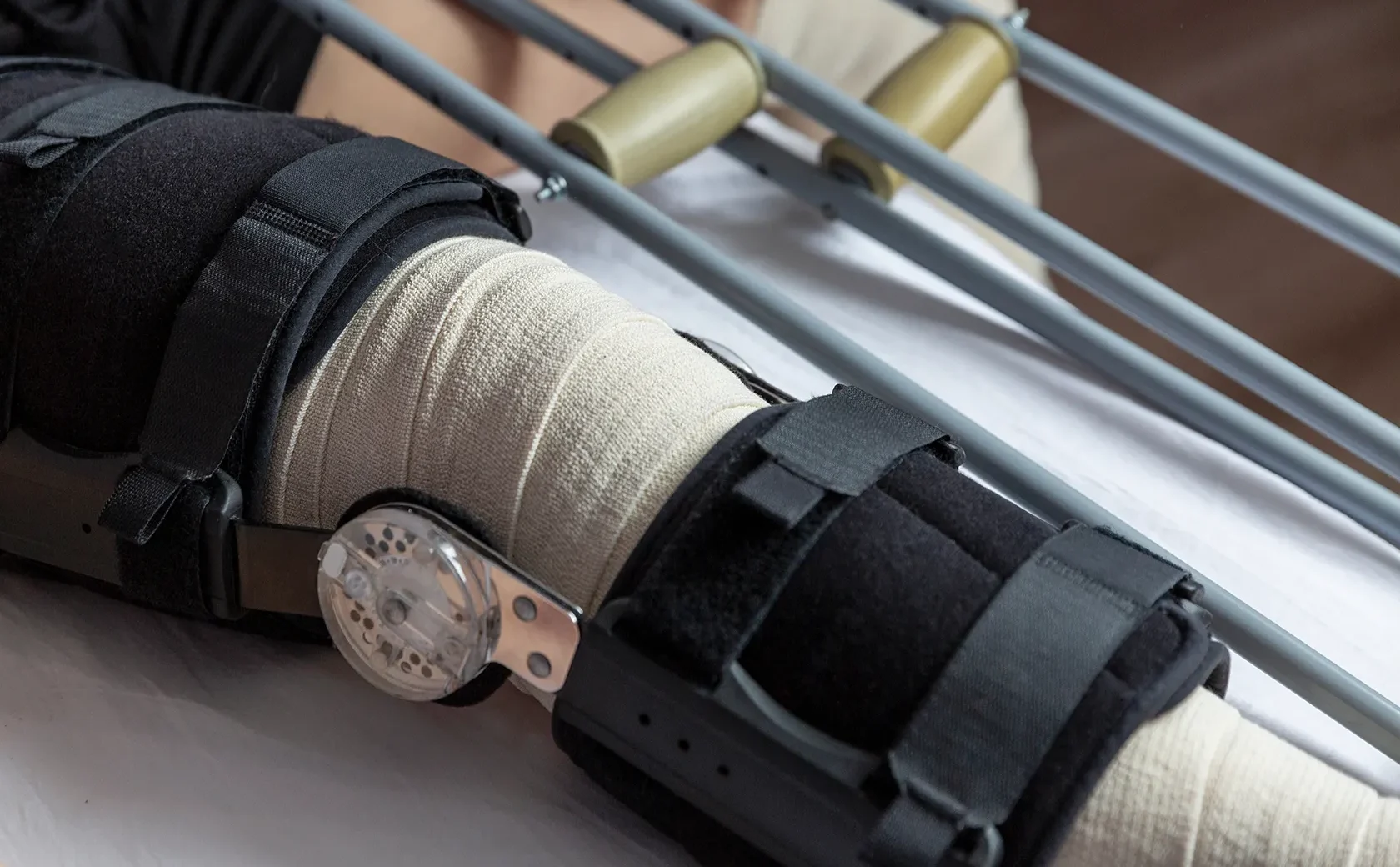Osteoarthritis of the knee, a debilitating and increasingly prevalent condition, affects millions of individuals worldwide, making it one of the most common musculoskeletal disorders. As our population ages and lifestyles continue to evolve, the incidence of knee osteoarthritis is on the rise, posing significant challenges to both patients and healthcare providers. For those who suffer from this chronic and often painful condition, seeking relief and regaining mobility and quality of life is a primary concern.

In the quest for effective solutions, surgical interventions have emerged as a critical avenue for addressing the symptoms and complications associated with knee osteoarthritis. While conservative treatments such as physical therapy, medication, and lifestyle modifications play a crucial role in managing the early stages of the disease, surgery becomes a viable option when these conservative approaches no longer provide adequate relief.
This comprehensive guide explores the intricate world of knee osteoarthritis surgeries, offering insights into the diverse surgical procedures available, their success rates, and the associated risks. Understanding the nuances of these surgical interventions is vital for patients, their families, and healthcare professionals, as it empowers them to make informed decisions about the most appropriate treatment plan.
Within these pages, we will delve into the intricacies of knee osteoarthritis, providing an in-depth examination of the disease’s causes, symptoms, and its impact on daily life. We will shed light on the progressive nature of the condition, addressing the growing concern of its prevalence and the need for effective management strategies.
Moreover, we will explore the various surgical procedures designed to alleviate the suffering caused by knee osteoarthritis, from minimally invasive techniques to full knee replacements. Our journey will include a close look at the factors that influence the success rates of these procedures, including patient suitability, post-operative care, and rehabilitation.
In the pursuit of comprehensive healthcare, it is essential to consider the risks associated with knee osteoarthritis surgery. We will dissect the potential complications, challenges, and long-term outcomes that patients may encounter, equipping readers with a balanced perspective on the surgical path they may choose to tread.
Osteoarthritis of the knee can be a life-altering condition, but knowledge is power, and this guide aims to provide a valuable resource for those who seek to better understand the disease, its surgical solutions, and the intricate balance between success and risk. Join us on this enlightening journey through the world of knee osteoarthritis, where we navigate the complexities of surgery, success, and the imperative task of improving the quality of life for individuals battling this pervasive ailment.
Understanding Knee Osteoarthritis: A Growing Concern
Knee osteoarthritis, often referred to as degenerative joint disease, occurs when the protective cartilage that cushions the ends of the bones in the knee joint gradually wears away. As this cartilage diminishes, the bones can begin to rub against each other, causing pain, stiffness, and swelling. Over time, the condition may lead to significant disability, impacting a person’s ability to walk, climb stairs, and engage in everyday activities.
The prevalence of knee osteoarthritis is steadily increasing, primarily due to factors like the aging population, rising obesity rates, and the wear and tear associated with modern, sedentary lifestyles. Consequently, the demand for effective treatment options, including surgical interventions, has grown significantly.
The Surgical Landscape for Knee Osteoarthritis: A Multifaceted Approach

Surgery for knee osteoarthritis is not a one-size-fits-all solution. Various procedures are available, each tailored to address specific aspects of the condition. These interventions can range from minimally invasive arthroscopic surgeries to more extensive interventions, such as total knee replacement.
In this guide, we will explore some of the key surgical procedures used to combat knee osteoarthritis:
- Arthroscopy: This minimally invasive procedure involves the insertion of a small camera (arthroscope) and surgical tools through tiny incisions in the knee. Arthroscopy is often used to diagnose and treat early-stage osteoarthritis by removing damaged tissue, loose cartilage, or bone spurs.
- Osteotomy: This procedure involves realigning the bones of the knee to shift weight away from the damaged area. Osteotomy is generally recommended for younger patients with localized knee osteoarthritis and aims to delay or prevent the need for more extensive surgery.
- Partial Knee Replacement: Unlike total knee replacement, this procedure involves replacing only the damaged portion of the knee joint with an artificial implant. It is suitable for patients with isolated arthritis in one compartment of the knee.
- Total Knee Replacement: Often considered the last resort, total knee replacement involves removing the damaged joint and replacing it with an artificial joint made of metal and plastic components. This comprehensive procedure is a highly effective option for patients with severe osteoarthritis.
The Journey to Success: Factors Influencing Surgical Outcomes
The success of any surgical intervention for knee osteoarthritis is influenced by a multitude of factors, and it is essential for patients and healthcare providers to consider these variables when making treatment decisions. Some of the factors that impact surgical outcomes include:
- Patient Selection: The patient’s age, overall health, and the severity of their knee osteoarthritis play a significant role in determining the most suitable surgical procedure.
- Post-Operative Rehabilitation: Proper rehabilitation and physical therapy are essential for a successful recovery. Commitment to rehabilitation exercises can significantly influence the effectiveness of surgery.
- Surgeon Expertise: The experience and skill of the surgeon performing the procedure are pivotal. Patients should seek out experienced orthopedic surgeons who specialize in knee surgeries.
- Patient Expectations: Realistic expectations are crucial for patient satisfaction after knee osteoarthritis surgery. Understanding the limitations and potential outcomes of the procedure is key to a successful recovery.
Balancing Success and Risk: Exploring Potential Complications
While knee osteoarthritis surgeries have the potential to alleviate pain and improve mobility, they are not without risks. Complications can occur, and patients should be aware of these potential challenges, which may include infection, blood clots, implant issues, and unforeseen pain. Understanding these risks allows patients to make informed decisions about their treatment and be prepared for potential post-operative challenges.
In this comprehensive guide on knee osteoarthritis surgeries, we will delve deeper into each of these topics, providing you with the knowledge and insights needed to navigate the complex world of surgical interventions. Whether you are a patient seeking relief from the burdens of knee osteoarthritis or a healthcare provider aiming to offer the best care to your patients, this guide will serve as a valuable resource in your journey towards improved knee health, mobility, and quality of life.
Empowering Patients with Informed Choices: A Personalized Approach
In the realm of knee osteoarthritis, there is no one-size-fits-all solution. The key to successful treatment lies in personalized care, tailored to each patient’s unique needs and circumstances. As you embark on this journey, it’s crucial to engage in open and honest discussions with your healthcare team. The decision to undergo surgery should be well-informed, considering your pain levels, the impact on your daily life, and the potential benefits of the procedure in light of the associated risks.
Additionally, exploring non-surgical treatments and lifestyle modifications before jumping into surgery may be a prudent approach. These options may include weight management, physical therapy, medications, assistive devices, and alternative therapies. Surgery should be seen as a valuable tool in your arsenal, reserved for cases where these conservative measures prove insufficient.
The Role of Physical and Emotional Preparation
Preparing for knee osteoarthritis surgery extends beyond the operating room. Pre-operative physical conditioning and emotional readiness are equally essential. Engaging in pre-surgery exercises to strengthen the muscles surrounding the knee can enhance your post-operative recovery. Moreover, understanding the process, setting realistic expectations, and addressing any concerns or anxieties can help alleviate the stress associated with surgery.
Post-Operative Recovery and Rehabilitation
Successful recovery from knee osteoarthritis surgery hinges on diligent post-operative care and rehabilitation. Physical therapy and exercises tailored to your specific procedure are integral to regaining strength and mobility. Adhering to your rehabilitation plan is crucial in maximizing the benefits of surgery and minimizing complications.
Your healthcare team will guide you through each step of the recovery process, ensuring that you’re on the right track. Patience is key, as full recovery can take several weeks or even months, depending on the surgery’s extent and your overall health.
Embracing a Brighter Future
As you journey through the world of knee osteoarthritis and its surgical solutions, it’s important to remember that the ultimate goal is to regain your quality of life. Whether you’re considering arthroscopy to address early-stage symptoms or contemplating a total knee replacement for more advanced osteoarthritis, these procedures have the potential to significantly reduce pain and improve your ability to move and enjoy your daily activities.
By exploring the surgical landscape, understanding the factors that influence success rates, and acknowledging the potential risks, you are taking a proactive step towards making informed decisions about your health. Moreover, this knowledge empowers you to engage in meaningful conversations with your healthcare team, fostering a collaborative approach to your care.
Knee osteoarthritis is a formidable adversary, but with the right information and guidance, you can take back control over your life. This comprehensive guide is designed to be your companion on this journey, offering clarity, hope, and a path toward a brighter, pain-free future. Whether you’re a patient or a healthcare provider, your dedication to understanding the intricacies of knee osteoarthritis and its surgical solutions is a testament to your commitment to improved well-being. Together, we can work towards a future where the burden of knee osteoarthritis is alleviated, and the joys of mobility and comfort are reclaimed.
Lifelong Wellness and Support
Recovery from knee osteoarthritis surgery doesn’t mark the end of your journey but rather a new beginning. Embracing a lifelong commitment to wellness is crucial to maintaining the benefits of your surgical intervention. Continue to work closely with your healthcare team, keep a watchful eye on your knee’s health, and adhere to recommended follow-up appointments. This ongoing collaboration ensures that any potential issues are addressed promptly, contributing to the longevity of your knee’s functionality.
Incorporating a healthy lifestyle, including regular exercise, a balanced diet, and weight management, will not only support your knee’s health but also enhance your overall well-being. These practices play a significant role in preventing the progression of knee osteoarthritis and the need for additional surgeries in the future.
For individuals considering or recovering from knee osteoarthritis surgery, support networks and patient communities can be invaluable. Connecting with others who have experienced similar challenges can provide a sense of belonging and encouragement during the recovery process. These networks offer a platform to share experiences, ask questions, and receive emotional support.
Advancements in Knee Osteoarthritis Care
The field of orthopedics is continually evolving, and advancements in surgical techniques and materials offer new possibilities for the management of knee osteoarthritis. Emerging technologies, such as 3D printing and custom-made implants, aim to provide more tailored solutions for individual patients, potentially improving the long-term success of knee osteoarthritis surgeries.
Furthermore, ongoing research is dedicated to understanding the root causes of osteoarthritis, with the hope of identifying preventative measures and innovative treatments. These advancements underscore the importance of staying informed and engaged in your journey towards knee health.
Conclusion
Knee osteoarthritis can be a formidable adversary, but with the right knowledge, proactive choices, and the support of a dedicated healthcare team, it is a challenge that can be overcome. Surgical interventions, carefully considered and executed, have the potential to transform the lives of those affected by this debilitating condition, offering the promise of pain relief, increased mobility, and a renewed quality of life.
This comprehensive guide has aimed to shed light on the complexities of knee osteoarthritis, surgical solutions, and the intricate balance between success and risk. As you continue your exploration of this multifaceted topic, remember that your well-being is at the heart of every decision. Whether you are a patient seeking relief or a healthcare provider dedicated to offering the best care, your commitment to understanding and navigating knee osteoarthritis is a testament to the pursuit of lifelong wellness.
The path to recovery may be challenging, but it is also one of hope and determination. Armed with knowledge and a supportive network, you have the tools to not only overcome the obstacles of knee osteoarthritis but also to stride confidently toward a brighter, pain-free future.






